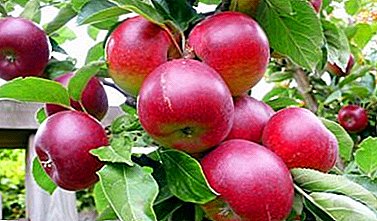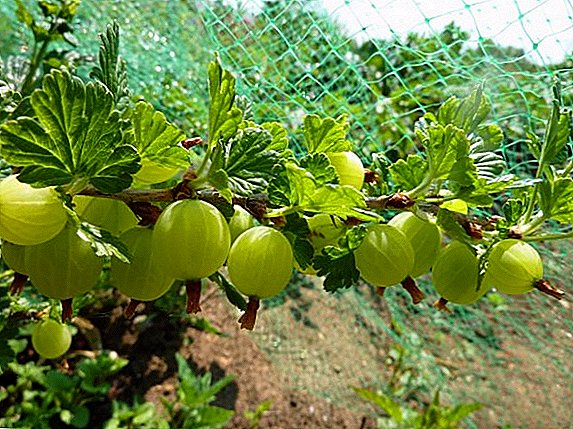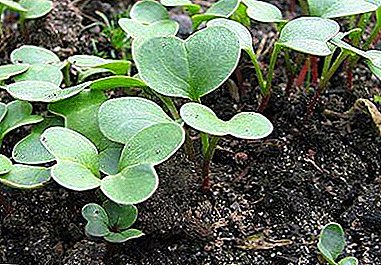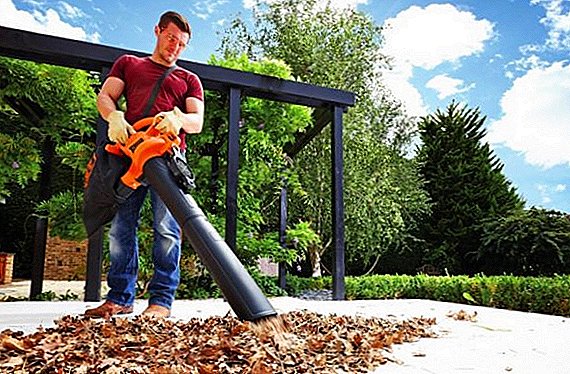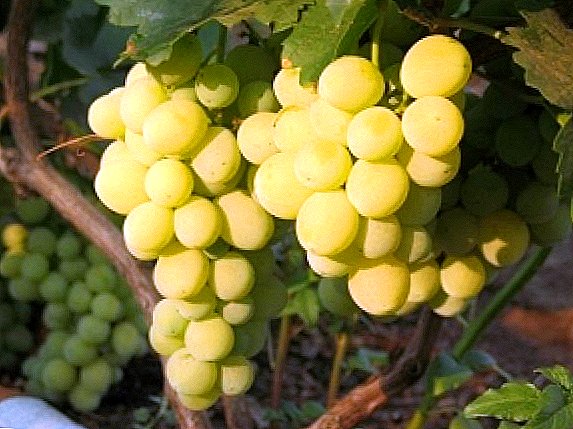
Very often, when buying grapes on the market or in a store, we don’t even think that we can grow exactly the same on our own plot.
At the same time, a big advantage of amateur, rather than industrial, viticulture is the more intensive growth of bushes, and with them clusters, because the bush usually has more room for growth and better care.
Thus, if you make a sufficient amount of effort, you can become not only a successful winegrower, but also to establish your own sales of grape fruits.
Today we want to tell you in detail about one of the best market grape varieties, which can be easily grown on any household or summer cottage.
Acquaintance with a grade of grapes "Valentine" and its main advantages
This grape is actually is a hybrid formIt appeared as a result of the painstaking work of Russian breeders.
This grape was obtained due to the very difficult interbreeding of very popular grape varieties: “Delight” with “Arcadia”, and the form obtained from them with “Summer Muscat”. The result was a very stable grape, suitable for all types of cultivation and for many climatic regions.
It is the newest hybrid form of table grapes with very high yield. Today, "Valentine" only achieves its popularity among fans.
We tell about brushes of grapes "Valentine" and about its berries

In any case, both professionals and amateurs, when meeting with a variety, first of all pay attention to its fruits.
In the case of the grapes "Valentine" no one will remain dissatisfied, because his hands are unusually large. The length of one bunch sometimes even reaches 40 centimeters, which is not so common among the varieties of this crop, especially considering that this grape can be grown under not quite warm climatic conditions.
Accordingly, the mass of these berries also reaches significant indicators - on average from 1 to 1.5 kilograms, but in amateur cultivation it is much more. They have a cylindrical shape, very elongated to the bottom. The structure of the berries on these clusters makes them moderately compacted or slightly loose.
Regarding the quality of the berries, the Valentine variety is at a very high level. Their sizes are also very large, with parameters of length as 3.7-4.4 centimeters, and widths - 2.3-2.6 centimeters.
According to this description, it is easy to conclude that the berries are slightly elongated, but it is worth paying attention to the exceptional feature of the Valentina grapes: the berry is not even, but slightly curved at the bottom.
A distinctive feature is also the color of the skin, which is represented by a golden-yellow color, capable of becoming amber-yellow in sunlight by pretty caulk (the last sign is the varietal difference between the grapes described and is not found on any other grape varieties).
In addition, with the intense illumination of the berries by the sun, a tan of a light brownish color may occur on one side.
But this amazing quality grapes "Valentine" does not end there, because we have not yet talked about his taste. Generally, his taste is harmonious, not like other grapes. But the taste of the berries is very unusual, has a great similarity with sage.
Winegrowers who are engaged in the cultivation of this grape note that in some years, with full and full ripening of these berries, a bright and unusually pleasant aftertaste of nutmeg may appear.
Also, the taste is well complemented by a very tender and pleasant flesh, when eaten which gives the impression that it simply melts in the mouth. Peel is also eaten, its taste does not affect the general sensations of grapes.
Lovers of sweet berries, this form will also please, because it has a good sugar storage capacity. In particular, when the indicators of the acidity level of the pulp is only 5-6 g / l, the sugar content of the fruit reaches 16-19%.
Specialists who are engaged in the assessment of new grape forms and varieties, fruits of grapes "Valentine" received very high recognition. In particular, their tasting score is equal to 8.6 points.
How to ripen the grape clusters of "Valentina" and when can you start collecting them?

Of course, that such a beautiful hybrid form of grapes does not have to expect any negative feedback about fruiting.
After all, in fact, "Valentina" is considered high-yielding., and is also valued for the stability of fruiting.
It is even more important to draw your attention to the fact that the shrub of the described grapes very quickly enters the period of fruiting.
This is also very strongly contributed by the characteristic growth rate and the ability to grow very widely.
At the first fruiting, the yield will not be very high, but with each subsequent growing season it will increase by 1.5-2 times.
In relation to fruiting, it is necessary to note the good maturity of the shoots (by ¾ or even the entire length). Also, most of the shoots of the bush is fruitful, since the indicator of this characteristic is 60-75%.
On one shoot usually 1-2 clusters are formed, the coefficient of fruit productivity of a bush - 1.1-1.2. Also, a very small part of the harvest can be formed on the stepchildren.
Harvesting the described form of grapes begins in the middle time, around the end of August, the first days of September.
On average, the vegetation period of a bush fully passes in 130-140 days, during which the berries fully mature, even in spite of the large size of bunches. Due to this, the crop is fully capable of ripening when growing bushes in the territory of central Russia.
Advantages of "Valentina": what characteristics of grapes are the most valuable?
The advantages of this grape are many. Let us try to summarize them and also indicate the factors not yet mentioned:

- The large sizes of both grapes and berries, as well as the unusual shape and exclusive taste of the latter.
- The absence of pea berries on the clusters, as well as the full-scale pollination of the bush, which takes place thanks to the bisexual flower.
- The clusters have very good commercial quality, as well as their good suitability for long-term transportation.
- Despite the large size and elongation of the bunch, its berries ripen absolutely along its entire length. Many believe that the lower part of the bunch should be cut off, but in the case of the described variety, this will go to your own harm.
- Berries are a good option for lovers of sweet, because they belong to the table forms.
- It is characterized by complex stability, which is especially evident in the possibility of opposition to mildew, oidium and gray rot.
- Vine resistance to frost is very high, up to -24ºС. However, at this temperature, the kidneys, which are capable of tolerating only a temperature of -22ºС, can suffer significantly.
- It is a very popular grape that encourages fans to grow "Valentine" not only for themselves, but also for sale.
Are there any shortcomings in this variety: what is important to pay attention when growing bushes "Valentina"?
Berries of the described form of grapes contain a large amount of juice. In very rainy years, this factor plays a cruel joke with them, since they can crack. Unfortunately, humankind has not yet learned how to deal with natural factors, so you need to be prepared for the fact that for this reason a small part of the grape harvest may be lost.
Too sophisticated winegrowers sometimes refer to the flaws and the presence of 2-3 seeds in the berries, which in general does not affect the overall impression of the taste of berries.
Also, not everyone appreciates "caulk" of these berries, sometimes perceiving it as some kind of unknown disease. But, we think that we have familiarized you with these grapes in sufficient detail and the last two factors will not mislead you.
How easy is it to plant "Valentine" grapes? Learn and practice

Planting grapes begins with the choice of the place where it will be best for it to grow and bear fruit. After all, this culture has some preferences, which must be taken into account.
First of all it is illumination, because grapes are a big fan of sunshine. Moreover, in shaded places, there is not even hope for a good growth of the bush. For this reason, it will be best to plant a bush on the south side of the site, so that from the north side it is still protected by buildings or trees from winds through.
It is also important to take into account the features of the relief and soil. In the first case, minor elevations would be preferable, since cold air often stagnates in the lowlands, causing fungal diseases of the vineyard.
As for the soil, in general, the described form and the culture in general have no particular preferences in this regard. But it is best to plant bushes in fertile and light soil, the ideal of which is black soil.
In case of insufficient fertility of the soil, it can be fertilized independently, which will qualitatively affect the growth of the bush and its fruiting.
It is also important to correctly take into account the area needed to supply the bush, so as not to plant the bushes very thickly. Since the “Valentina” bush has a strong growth, it is preferable scheme 4x6 meters. In this case, both the root system and the shoots will have enough space for growth and for obtaining the necessary substances.
But there is another important point - the depth of groundwater. The fact is that the roots of grapes usually go very deep into the depths, and can be washed by these waters. Therefore, if the groundwater rises higher than 3 meters to the soil surface, be sure to dig out on your site drainage system.
How to guess with the timing of planting vines?
With the timing you need not to guess, but to clearly know when and what types of planting materials are planted. First of all, it is worth mentioning that grapes are planted both in spring and in autumn. At the same time, the choice of one season or another does not matter, since each has its own merits.
In spring, planting dates are very stretched, but here you can navigate to the method of planting.
In earlier springtime, seedlings are planted or cuttings are planted, which have been preserved until this time since spring. In the middle of spring, you can make branches, or also to plant seedlings. But in the late spring and even in the first days of summer, you can plant green seedlings.
In the autumn, the choice with the landing methods is less diverse, since at this time of the year it is possible to use only dormant materials. It is only important to take into account that it is impossible to plant too early, so that the grapes do not begin to grow in the frosts, but you can’t plant grapes in cold weather either. Therefore, the most appropriate period will be mid-October.
We plant grape saplings: what is important not to forget?

Before planting the seedling, in 2-3 weeks it is important to prepare the pit. This is done so early for the reason that the pit is filled with a large amount of fertilizer and fertile soil, which must sift before the direct planting of a grape bush.
Used as fertilizer potassium salt, humus, nitrogen and superphosphates. In order not to damage the roots with a large concentration of them, a layer of soil without fertilizers must also be poured over.
Preparing a seedling takes not so much time, but the most important thing is to choose a good and not damaged seedling. In particular, pay attention to the root system, the healthy roots of which should be white.
Before landing root system is immersed in water for a few days to increase her vitality. You can process them with solutions that can stimulate the formation of roots.
Lowering the seedling into the pit do not forget that its root neck should not be below the level of the soil, and even more so, it is filled up with it. Bury the hole should be carefully and gradually, trying not to damage the root system, but not to leave gaps with air.
For this reason, in the middle of the described process, 10 liters of water are poured into the pit. Water is also needed upon completion of the planting of a grape bush in order to water it abundantly. Do not forget also about the support for the bush and the mulching of the soil around it.
It is also interesting to read about early grapes
Grafting grapes cuttings: how easy is it?
To grow a grapevine from the old stock and varietal cutting "Valentina" you need:
- To prepare a stalk with a length of 2-3 peepholes.
- Cut the lower part of the cutting from both sides and lower it into the water until the moment of grafting.
- Also, the stalk can be waxed, which will increase its stability and endurance.
- Preparation of the stock first includes removing the old bush, after which it will be enough to leave a stump of 10 centimeters.
- The cut surface should be smooth, it also needs to be further cleaned to perfect smoothness.
- To graft a stalk, you need to make a shallow split in it with a small sharp ax.
Further, the cutting is placed in the split. You need to deepen only the part that was previously cut off. To create a stronger contact between them, the stock is very tightly tightened and also coated with clay. Then - all the same actions that are performed when planting grapes with a sapling: digging in a support, watering and mulching the soil.
Care for grapes "Valentine": which important aspects should not be forgotten?
- Grapes love moisture and regular feeding. It is very important to water and fertilize the bushes that are already bearing fruit, this is done in the spring, from the very beginning of the growing season of the bush, or even earlier. Nitrogen and potassium phosphate fertilizers, also organic, have the best effect on grapes.
- After each watering, the soil around the stump of a grape bush must be covered with mulch — moss or sawdust.
- To stimulate the formation of larger clusters, it is important to prune the bush every autumn. However, it is important to know that the described form of grapes is recommended short or medium pruning.
- "Valentina" refers to covering or semi-covering grape varieties, which should not be forgotten when winter frosts are approaching.
- To protect the bush from diseases, it is regularly sprayed with herbicides for prevention. Such treatments are carried out twice before flowering of the bush and during the formation of peas on grape inflorescences.



